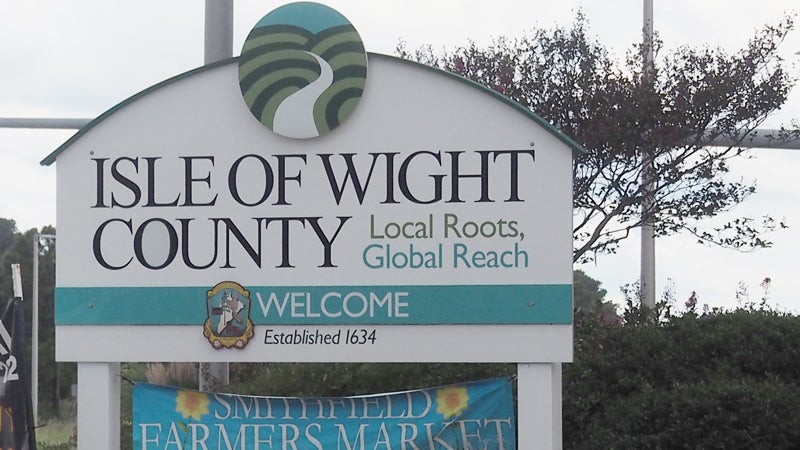IW seniors pulling ahead of youth
Published 8:46 pm Tuesday, January 21, 2020
By Diana McFarland
Editor
In 10 years, it is estimated that Isle of Wight County residents age 65 and older will outpace those under 19 by four percentage points — a trend that is occurring throughout the Hampton Roads region.
Those 65 and older will be 26 percent of Isle of Wight County’s total population in 2030, while those age 19 and less will comprise 22 percent, according to projections from the Weldon Cooper Center.
That’s a huge shift from 50 years ago, when the number of younger residents was three times greater than those over 65.
In the Hampton Roads region, the total population grew by 2.8 percent, but the senior population went up 23 percent from 2010-2017, according to the Hampton Roads Planning District Commission.
The aging trend is often discussed at public meetings in a variety of contexts, from the workforce to housing to services, but it seems that folks don’t know if it’s good, bad or simply neutral. {mprestriction ids=”1,2,3,4,5,6″}
For many years this trend has been looked at as the “silver tsunami,” as if seniors were a burden that would cause the economy to collapse, said Steve Zollos, executive director of Senior Services of Southeastern Virginia.
That’s a myth, it’s been debunked, he said.
Seniors today are healthier and more active and engaged than in the past, he said, adding that they suffer from fewer chronic illnesses, and those that do, are managing them better.
Zollos points out that misconceptions about seniors often come from the focus on certain diseases, such as Alzheimer’s, and the tendency is to lump all older folks in one category.
Yet 88 percent of those age 65 and up do not suffer from any form of dementia, he said.
“They can hold positions and continue in the workforce effectively. We can’t discard those fully functioning seniors – 88 percent—because there’s an illness that sometimes focuses on seniors,” said Zollos.
This trend was recently discussed during an economic development worksession and its implications for attracting business, industry and jobs to the area.
There was concern that Isle of Wight’s aging demographic would make it harder to attract new business, as maintaining a skilled workforce is a top consideration when choosing locations.
Jurisdictions tend to be concerned with developing a workforce, such as improving education or finding ways to get millennials to stay, but they ignore the seniors who already have the skills, the expertise and also bring stability, said Zollos.
During the economic development worksession, Smithfield District Supervisor Dick Grice, who is himself in his seventies, suggested that companies look to retirees to fill jobs, perhaps on a part-time basis.
Many retirees want to work and they are skilled and capable, he said.
The aging trend is also impacting the housing sector here, as two developments geared for the older demographic has either been approved, South Harbor, or in the works, such as Sweet Grass near Smithfield.
East West Partners Hampton Roads Division President Branch Lawson, who is developing the 340 age-restricted South Harbor off Route 17 in Carrollton, said that type of housing is underserved in this region and that is one reason it’s an attractive product to build.
While in the past a proposal for a new development would focus on the impact on schools, with age-restricted neighborhood, the concern is that it will lead to an increase in emergency service calls and how that will be funded.
The graying population has also led the Board of Supervisors begin a new senior companion program, which quickly ran into funding problems last year.
Newport District Supervisor William McCarty wants to keep the program going, as it’s geared for those that don’t qualify for other state or federal aid.
“They’re too valuable to leave them in the rearview mirror,” he said, adding that they have worked, paid taxes and footed the bill for others and deserve equal consideration.
McCarty notes that, historically, Isle of Wight’s public school system has claimed the largest chunk of the county’s budget, but as the population becomes older, it may lead to some challenging discussions on where the dollars will be allocated.
It’s not an either-or, but both, he said.
Zollos references the Oxford Economics “longevity economy,” which is the sum of all economic activity driven by those age 50 and older. It seems that that age group is one of the most significant contributors to U.S. economic activity, according to Oxford Economics.
Zollos notes that the volunteer workforce is primarily seniors and they tend to have more disposable income.
For example, the City of Chesapeake notes on its website that volunteers contributed 382,840 hours of service at a value of more than $9.2 million.
If we keep seniors in the workforce, volunteering and spending their disposable income, “there really is an increase on investment,” Zollos said, referring to the senior infrastructure, that can be anything from affordable senior housing to curbing for wheelchairs to transportation to nutrition and other services.
If that infrastructure is ignored, then yes, that population could become a burden, said Zollos, whose organization relies on funding assistance from localities. Most cities and counties are providing the same amount of dollars they did years ago, although the senior population is growing.
By keeping funding flat, it decreases Senior Services’ ability to help older folks.
Isle of Wight, however, has increased its contribution by nearly 13 percent, from $48,934 in fiscal 2018 to $55,192 in fiscal 2020.
“We need a fresh perspective,” said Zollos. {/mprestriction}





